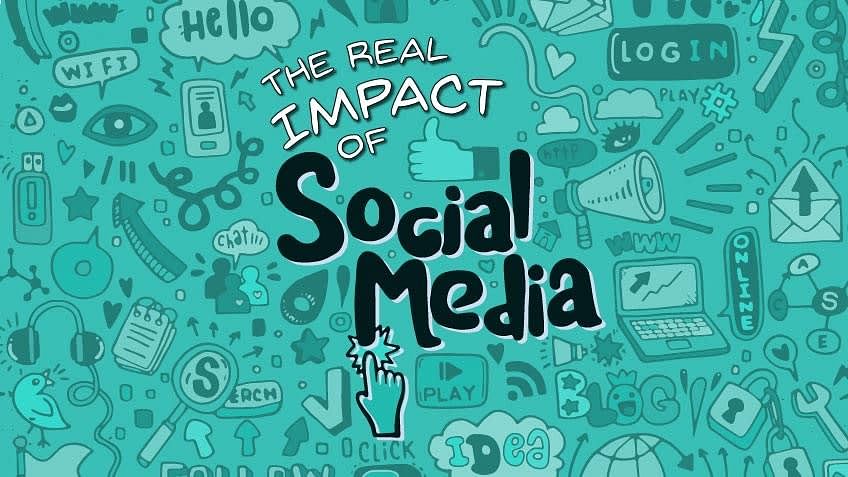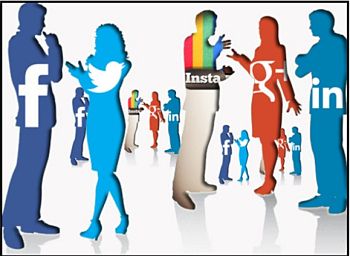Juvenile Law Center offers excellent benefits, including employer-paid health, dental and vision insurance for employees and their families, short- and long-term disability and life insurance, and employer contributions to 403b retirement plans.  Efforts to prevent the negative effects of young peoples use of social media begin by educating teens and adolescents about the dangers these services present. Consumption is not the same across generations and the type of media we're consuming hints at generational culture gaps. The 2022 edition discusses the impact of the COVID-19 pandemic on young people and their labour market prospects during the recovery and beyond. The Pew Research Centers 2018 survey of U.S. teens determined that one in six teenagers have experienced at least one of six different forms of abusive behavior online: The survey found that 90% of teens believe online harassment is a problem for people their age, and 63% identify it as a major problem. Yet, the most recent Pew survey of teenagers use of social media and other technology, also conducted in 2018, revealed some interesting findings. Further research could explore the implications of the impact of the COVID-19 pandemic to the business of pharmacy.
Efforts to prevent the negative effects of young peoples use of social media begin by educating teens and adolescents about the dangers these services present. Consumption is not the same across generations and the type of media we're consuming hints at generational culture gaps. The 2022 edition discusses the impact of the COVID-19 pandemic on young people and their labour market prospects during the recovery and beyond. The Pew Research Centers 2018 survey of U.S. teens determined that one in six teenagers have experienced at least one of six different forms of abusive behavior online: The survey found that 90% of teens believe online harassment is a problem for people their age, and 63% identify it as a major problem. Yet, the most recent Pew survey of teenagers use of social media and other technology, also conducted in 2018, revealed some interesting findings. Further research could explore the implications of the impact of the COVID-19 pandemic to the business of pharmacy.
International Pharmaceutical Federation. Receive information about the benefits of our programs, the courses you'll take, and what you need to apply. The PubMed wordmark and PubMed logo are registered trademarks of the U.S. Department of Health and Human Services (HHS). Beyond getting sick, many adolescents social, emotional and mental well-being has been Economic hardship, special educational needs and neurodevelopmental disorders, parental stress, and child and adolescent mental health are closely related. Report 10: children and adolescents' mental health: one year in the pandemic. Facebook has had a great impact on promoting information while in this pandemic, with more than 2.500 millions of users worldwide just by a click or a hashtag of anything related to the coronavirus we could have access to all the information that is on this social media in relation to this topic. Many factors could influence these differences by gender, including the misogyny that permeates many online spaces and the higher rates of harassment and cyberbullying experienced by women. While this may have impacted the results, there was good representation across five of the WHO regions.
The overall. Webfacebook share The coronavirus disease (COVID-19) has affected the lives of young people everywhere. Impact of the Novel CoronaviruS (COVID-19) on Frontline Pharmacist Roles and ServicEs in Canada (the INSPIRE questionnaire [, This study was a descriptive exploratory, nonexperimental cross-sectional questionnaire. With this close to ideal depiction of ones self on social media, it can cause many to comment on how great you look and how great your life is, which can directly affect (and boost) someones self-esteem.
Shedding the light on Pharmacists roles during COVID-19 global pandemic. Guidelines for safe, healthy use of social media by young people should include the following strategies. Telemat Inform. MDPI and/or Draenovi M, Vukui Rukavina T, Machala Poplaen L. Int J Environ Res Public Health. The model suggests that if members of various groups can recategorize themselves as members of a more superior group, the intergroup relations can drastically improve. 2020 Sep 23;11:582352. doi: 10.3389/fpsyt.2020.582352.
The questionnaire was provided in English and French. Between March, 2020, and March, 2021, we have seen clear increases in parent-reported symptoms of SDQ behavioural and attentional difficulties at times of peak restrictions, when most children were not physically attending school (. The percentage of teens who report using Facebook declined to 51% in 2018 from 71%, according to a 2014-2015 teen survey. Social media use increased more in adolescent inpatients than in community during the COVID-19 pandemic. The findings have significant theoretical and practical implications for the use of social media to promote health, well-being, and quality of life among young people during public health crises. Social media can and does have a positive effect on children and teens, whether by teaching social skills, strengthening relationships or just being fun. Lastly, they note that US adults will probably spend about seven more minutes a day on social media, but they expect this to decline in 2021 once the pandemic is controlled (Samet, 2020).  At the same time, online media creation is a promising form of activism that contributes to young peoples expression of their political identity and their development of civic skills like critical thinking, dialogue, debate, and collaboration.
At the same time, online media creation is a promising form of activism that contributes to young peoples expression of their political identity and their development of civic skills like critical thinking, dialogue, debate, and collaboration.  The survey covered adults between the ages of 18 and 29 who will be eligible to vote in the United Stated by the 2020 General Election. A Feature The spread of misinformation can easily result in mass hysteria about current events (Sahni & Sharma, 2020). Jonathan M. Tisch College of Civic Life Impact of the Novel CoronaviruS (COVID-19) on Frontline PharmacIsts Roles and ServicEs: INSPIRE Worldwide Survey. Also, young adults (age 18 to 25) have the highest incidence of mental illness of any adult age group: 25.8%, compared to 22.2% for ages 26 to 49, and 13.8% for ages 50 and up. For example, the pharmacists role of delivering medications was applicable to 83.4% of the community pharmacist participants and only 17.6% for those practising in acute care. The researchers pointed to social comparisons and negative reinforcements as the causes of heightened depression rather than simply the time that screen viewing takes from other activities. Furthermore, many rely on the Internet for the latest news and updates in the world and social media has started to evolve into sharing information about important current events, but many users on social media can troll on the platform by disseminating misinformation. The site is secure. WebThe Effect of Social Media on Stress among Young Adults during COVID-19 Pandemic: Taking into Account Fatalism and Social Media Exhaustion Social media has been widely WebThe present study empirically investigates and theoretically substantiates the results of the impact of social media on young web-users psychological well-being during the forced How we truly feel about ourselves begins from the inside and is expressed outwardly. 2023. To combat feelings of inadequacy or insecurity caused by their social media activities, teens and adolescents must be taught that what they see on social media (and elsewhere online) often does not reflect reality but rather is a biased perspective of happenings in the real world. This can specifically apply to how social media is used as it further encourages people to compare their actual selves to their ideal selves depicted on platforms. They could be motivated to share their perspectives because they dont see voices on social media that speak to them or their issues. ; Lee, D.H.; Nusair, M.B.
The survey covered adults between the ages of 18 and 29 who will be eligible to vote in the United Stated by the 2020 General Election. A Feature The spread of misinformation can easily result in mass hysteria about current events (Sahni & Sharma, 2020). Jonathan M. Tisch College of Civic Life Impact of the Novel CoronaviruS (COVID-19) on Frontline PharmacIsts Roles and ServicEs: INSPIRE Worldwide Survey. Also, young adults (age 18 to 25) have the highest incidence of mental illness of any adult age group: 25.8%, compared to 22.2% for ages 26 to 49, and 13.8% for ages 50 and up. For example, the pharmacists role of delivering medications was applicable to 83.4% of the community pharmacist participants and only 17.6% for those practising in acute care. The researchers pointed to social comparisons and negative reinforcements as the causes of heightened depression rather than simply the time that screen viewing takes from other activities. Furthermore, many rely on the Internet for the latest news and updates in the world and social media has started to evolve into sharing information about important current events, but many users on social media can troll on the platform by disseminating misinformation. The site is secure. WebThe Effect of Social Media on Stress among Young Adults during COVID-19 Pandemic: Taking into Account Fatalism and Social Media Exhaustion Social media has been widely WebThe present study empirically investigates and theoretically substantiates the results of the impact of social media on young web-users psychological well-being during the forced How we truly feel about ourselves begins from the inside and is expressed outwardly. 2023. To combat feelings of inadequacy or insecurity caused by their social media activities, teens and adolescents must be taught that what they see on social media (and elsewhere online) often does not reflect reality but rather is a biased perspective of happenings in the real world. This can specifically apply to how social media is used as it further encourages people to compare their actual selves to their ideal selves depicted on platforms. They could be motivated to share their perspectives because they dont see voices on social media that speak to them or their issues. ; Lee, D.H.; Nusair, M.B.
In September 2018, 18% of young people (ages 18-24) reported posting content they created on social media about politics in the month before being asked.
While trying to depict their life in the best way possible, people may start to see themselves in two different ways (their actual self in real life versus their ideal self-depicted in social media) and because of this, a lot of discomfort may arise within individuals as they may feel a strong urge to be their ideal self, but it may not be realistic to the type of lifestyle they currently live. No matter the positive function or negative effect of information dissemination, it involves the publics risk perception and behavior. Psychology of Women Quarterly, 30(3), 239251.
The most common challenges were increased stress levels (84.7%), followed by medication shortages (73.8%), general supply shortages (71.8%), and inadequate staffing (69.2%). WebThe present study empirically investigates and theoretically substantiates the results of the impact of social media on young web-users psychological well-being during the forced self-isolation caused by the progression of the COVID-19 pandemic (N = 254). [CDATA[// >